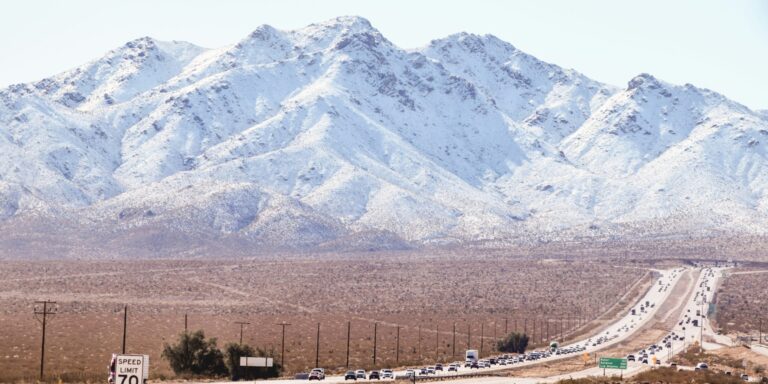The economic landscape of Nevada in 2025 is characterized by both uncertainty and opportunity, shaped by shifting legislative actions, economic policies, and ongoing challenges such as workforce shortages and inflationary pressures. As the state continues to recover from the economic aftermath of the COVID-19 pandemic, its lawmakers and business leaders are balancing growth initiatives with the realities of a rapidly changing global market.
Economic Indicators and Growth Challenges
Nevada’s real gross domestic product (GDP) decreased by 0.3% year-over-year in the first quarter of 2025, as per the U.S. Bureau of Economic Analysis. While the state’s economy remains resilient, the recent downturn is attributed to a few key factors: a slowdown in government spending, increased imports, and declines in mining output. Nevada’s economy is heavily reliant on the gaming industry, and while tourism continues to grow, the state faces challenges in diversifying its economic base beyond tourism and hospitality.
However, exports and investment are among the few sectors seeing consistent growth. The technology sector, particularly in Las Vegas and Reno, continues to attract venture capital and startups, driving innovation and long-term growth prospects. Nevada is increasingly seen as an emerging hub for tech talent, with many new tech companies flocking to the state to take advantage of its business-friendly policies and relatively lower costs compared to Silicon Valley.
As of the most recent reports from the Nevada Governor’s Office of Economic Development, the state saw strong investment in solar energy, sustainable tech, and clean manufacturing in early 2025. This indicates a positive trend toward green innovation, as renewable energy firms are increasingly drawn to Nevada’s abundant sunshine and open spaces for large-scale solar projects.
The Legislative Landscape: Housing, Taxes, and Worker Rights
The Nevada State Legislature adjourned in May 2025, with lawmakers passing key bills focused on affordable housing, education, and economic development. Among the most significant legislative actions was the passage of a bill allocating $133 million to support the construction of attainable housing for the state’s growing middle class. This move comes in response to Nevada’s housing affordability crisis, especially in Clark County, where home prices have surged over the past decade, leaving many middle-income residents priced out of the housing market.
In addition to housing, the legislature also approved teacher pay raises, addressing long-standing concerns about Nevada’s low teacher salaries. This decision is expected to positively impact Nevada’s education system, which has been struggling with teacher shortages and high turnover rates.
However, the state also saw challenges in advancing key business-friendly bills. Governor Joe Lombardo’s proposals to provide tax incentives for the film industry were blocked by state Democrats, citing concerns over fiscal responsibility. While Nevada has become a popular filming destination due to its scenic landscapes and urban landscapes, the tax credits to incentivize production did not advance through the state’s legislative body.
Nevada’s Employment Landscape
Despite these legislative successes, the state is still grappling with labor shortages, particularly in sectors like hospitality, manufacturing, and healthcare. According to a recent report by the Nevada Department of Employment, Training and Rehabilitation (DETR), the state is facing a workforce participation rate lower than the national average. This issue has been exacerbated by the pandemic’s long-term impact on the labor market, with many workers opting for early retirement or seeking employment in less physically demanding sectors.
In response, state officials have worked to address the skills gap in industries that require specialized training, such as construction and technology. Programs aimed at improving vocational training and higher education opportunities for Nevada’s younger population have been ramped up. Governor Lombardo has also signed into law an initiative aimed at increasing the state’s apprenticeship programs, which will offer thousands of training opportunities in high-demand sectors.
Economic Outlook for the Future
Looking ahead, Nevada’s economy is expected to continue its growth trajectory, though not without its challenges. With investments in technology, education, and clean energy, Nevada is well-positioned to become a leader in the green energy sector and high-tech industries. However, much depends on how the state balances its traditional sectors—such as gaming and tourism—with its future ambitions.
Local governments in Las Vegas and Reno are actively pursuing plans to expand their high-tech sector and have begun attracting startups with initiatives such as tax breaks, low-interest loans, and grants. Additionally, foreign investment in renewable energy is likely to increase as Nevada’s green energy incentives and natural resources offer a solid foundation for sustainable projects.
Conclusion: A Path Toward Diversified Growth
In conclusion, while Nevada faces challenges in maintaining its current economic growth due to housing affordability and labor shortages, there are many opportunities ahead. The state’s continued investment in renewable energy, technology, and workforce development provides a promising outlook for the future. Nevada’s ability to diversify its economy while maintaining its iconic tourism and hospitality industries will determine its long-term prosperity in an increasingly competitive global economy.


